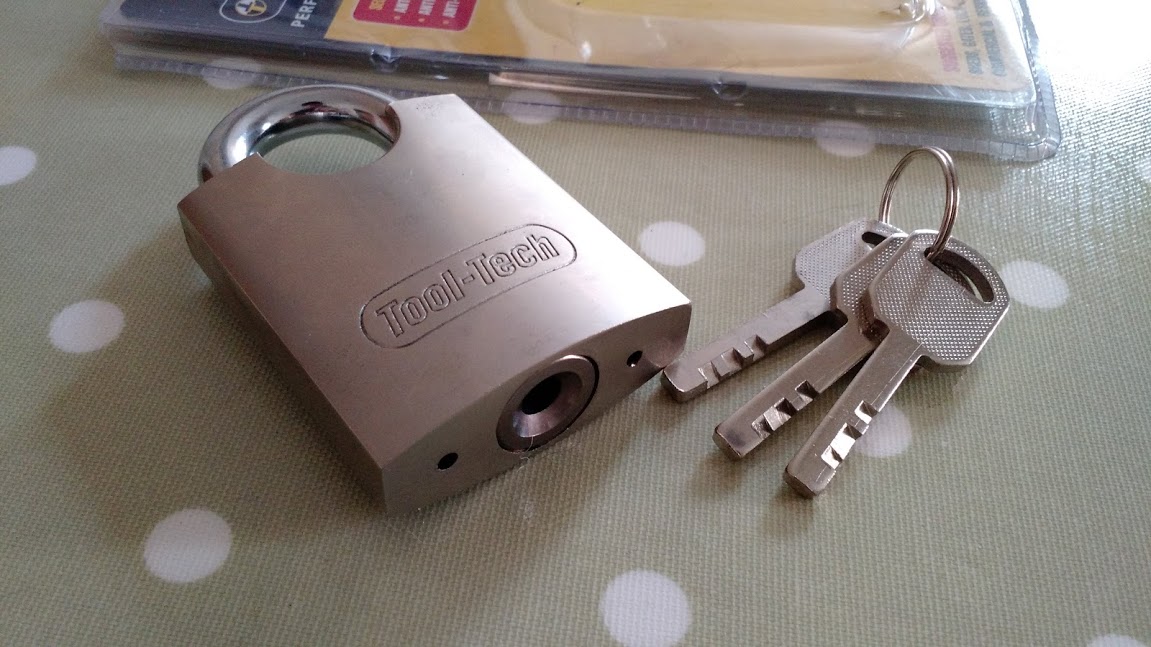Picking ‘unpickable’ locks - security vs obscurity
This morning a parcel arrived: a padlock I’d ordered from Amazon to practice lockpicking with.
For those of you who might be concerned I'm turning to a life of crime - lockpicking is a time-honoured hobby practiced ethically for centuries by tinkerers and polymaths. It's a type of three-dimensional puzzle and a great way to improve spatial-awareness, patience, and dexterity - as well as being lots of fun.
As I unpackaged the lock I marvelled at its solid un-cuttable construction, shim-proof ball-bearing mechanism, and hefty weight. Then I took it to my workroom, set a timer and started to pick it. 2 minutes and 32 seconds later I felt the swing of the tension tool turning the zero-disc and the clank of the large shackle dropping open. Success!
But allow me to let you into a secret, good readers. This wasn’t any old lock. Indeed, no. This was an unpickable lock!
Or so I had been led to believe by customer J.A. Stewart’s 5-star review of this padlock on Amazon…
“The keys are of a high security design and I would imagine that this lock cannot be picked easily if at all.”
lol.

Of course I mean no disrespect to this reviewer, and I’m glad he took the time to write a detailed review for this item and help others who are considering future lock purchases. However his assumption that an unusual lock style (a disc detainer in case you’re interested) correlates with good security is very common.
This illustrates the point I wish to make quite effectively.
Obscurity is not the same thing as security.
As I see on a daily basis while monitoring client interactions with the internet, emails, and mobile apps - people assume that something being complicated or ‘behind-the-scenes’ is the same as something being secure.
Case in point: mobile apps often ask users for details - sign into this, type in your personal details here, pay for that. These interactions happen, the data is sent somewhere, and an answer provided - or payment accepted. But how are these communications sent?
More and more on the internet, people are understanding the need for the https bit in the web address when entering banking details, or that padlock symbol next to the web address. People are coming to realise (finally!) that we need a secure connection before sending personal details or passwords. But on mobile apps we don’t have an address bar.
we have to make the assumption that this standard minimum level of secure transaction is what is happening.
As I’ve delved deeper into mobile app security testing I have seen time and time again that app developers don’t prioritise security at all.
- I have seen highly personal data being sent from apps to insecure webpages where it can be looked up by anyone (even though the app promised a high level of security)
- I’ve seen ad traffic in apps redirecting people to download malware without their knowledge
- I’ve seen apps built so badly that someone can click a couple of buttons to entirely skip the login process and enter the account in the app without a password!
This month Apple announced their commitment to improving security of iOS apps by (soon) forcing developers to use https communications in their apps. While this only covers one small aspect of app security as a whole it is an important step - and one I hope that Android follows suit on ASAP.
So a quick reminder:
- watch out for reports of insecure apps
- don’t install apps from ‘alternative’ app stores
- and make sure you’re happy with the reviews and permissions before installing anything on your mobile devices.
Stay safe out there!


